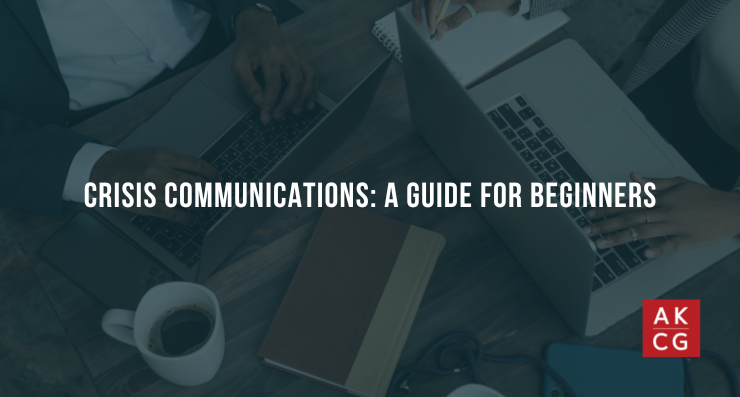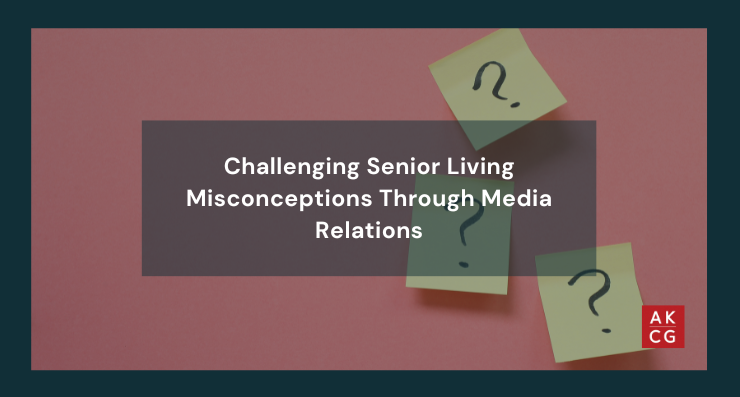A Beginners Guide to Crisis Communication Plans
One of the most important elements to managing an organization’s reputation is building and maintaining a healthy and trustworthy relationship with its most important audiences. In today’s media landscape, crisis planning has become more crucial than ever to effectively, and authentically, communicate with the people that matter most to you and your organization. It can be challenging to preserve trust when a crisis arises. In these moments, it is critical to have a crisis communications plan that can address a situation quickly while retaining the goodwill of close stakeholders.
What is Crisis Communications?
Crisis communications is the preparation and distribution of information needed to address and resolve a challenging situation. A crisis is any situation that has the ability to affect an organization’s relationships with stakeholders, operations, or bottom line. Here are some examples of scenarios where crisis communications might be necessary:
- An organization is accused of racial or gender discrimination in hiring practices
- A major security breach results in customer information being exposed or compromised
- A company’s product is linked to a health hazard
- A natural disaster affects the operations of an organization
- A public figure connected to an organization makes controversial statements
Regardless of the size of the issue, it is important to prepare for potential threats that could influence how a company is perceived. Crisis communications involve planning ahead, so there are measures in place to help minimize the negative impact a crisis can have on an organization’s public image.
What are the Benefits of a Crisis Communications Plan?
Crisis plans are implemented by organizations to help them maintain their reputation, build and retain trust with stakeholders, and respond quickly and effectively during challenging situations. A crisis communications plan should be built through a collaborative process and should draw on the perspectives and expertise of key leaders and decision-makers throughout an organization. They serve an important role in informing the plan and strategizing in advance about how to approach a given situation.
A high-quality crisis plan is specific to an organization and can include templated language or instructions on how and when to communicate with important audiences. Although crisis communications can help protect how external audiences view an organization, they should prioritize relationships with internal audiences or those who are directly involved with and impacted by an organization’s services.
While a crisis cannot always be prevented, it can be anticipated, and a crisis communications plan is a vital tool to stay prepared.
What makes a crisis communications plan effective?
An effective crisis communications plan should:
- Offer a detailed strategy outlining the steps and roles of each party involved in making decisions for the organization
- Provide clear guidance on how to respond to a crisis, including what will be communicated to who and how
- Anticipate potential risks or difficulties that could arise because of the initial challenge
- Outline measures that can be taken in order to prevent crises from occurring in the first place
- Include strategies for monitoring and evaluating the effectiveness of your response after the fact
Crisis Preparedness vs. Response
A crisis communications plan consists of two main segments: Crisis Preparedness and Crisis Response.
Crisis preparedness allows organizations to anticipate a crisis and properly plan for it. In the crisis preparedness stage, communications focus on monitoring for reputational risks and devising communication strategies to effectively address these risks. This approach enables organizations to communicate effectively with important stakeholders when the time comes. Through risk assessments, planning and training, organizations can avoid or mitigate the impact of a potential crisis. Should a crisis escalate, a crisis preparedness plan will be implemented in the crisis response phase.
Crisis response is the immediate communication with target audiences following a crisis to provide information and safeguard the reputation of an organization. In most crisis situations, the goal of a response is to maintain the trust an organization has with its audiences. A response should be quick to set the tone early, while offering information that will help internal audiences understand what an organization is doing to resolve the issue.
Every organization has a reputation to uphold, and how an organization prepares for a crisis is just as important as how it responds to it.
10 questions to ask before and during a crisis
When developing a strategy for communicating with external media or internal stakeholders during a crisis, you may want to consider the following questions:
- Have you developed a team to manage the crisis, adjust and assess media relations, create messaging and coordinate communications?
- Are you monitoring your social media channels for any potential threats or comments that need responding to?
- Have you prepared messaging that will support you in responding to the crisis quickly and accurately?
- Are you actively engaging with stakeholders and the public to explain how you are addressing the crisis?
- Do your messages convey empathy and understanding for those impacted by the situation?
- Are you taking steps to correct any misinformation that’s been spread about your organization?
- Have you created a timeline of when key messages should be sent out, and do they follow the “right” order?
- Do you have a plan in place to manage media requests and inquiries?
- Are you using data, analytics, and insights to track the impact of your communications efforts?
- Are you prepared to provide additional resources or support if needed?
Crisis management strategies
Spokesperson
A key member of the organization should be identified as the primary spokesperson for media inquiries and other public appearances. This person should be well-versed in the organization’s policies and procedures and have a working knowledge of the situation.
Media relations
Media relations should be managed proactively to ensure that the organization is able to provide accurate information about the crisis in a timely manner. Along with this, it is also important to understand what narratives already exist about your organization in the media, as well as what media channels may be interested in reporting about a crisis at your organization.
Social media
Organizations should monitor their social media channels for comments, questions, and concerns that may arise during a crisis. Social media can be used to respond swiftly to inquiries and provide brief updates about a situation.
Analytics
Data analytics can be used to monitor the effectiveness of a crisis plan and track public sentiment about an organization. This can help inform decisions about messaging, media relations, and other communications in order to optimize outcomes.
In Conclusion
Crisis communications is an ever-evolving field that requires quick thinking and strategic decision-making. An effective crisis communications plan can help organizations weather internal and external challenges, protect their reputation, and preserve goodwill among key stakeholders. By staying prepared for potential risks and having a strategy in place to respond efficiently, organizations can make sure they are ready to face any crisis.
AKCG – Public Relations Counselors are experts in crisis communication management. We specialize in developing comprehensive crisis communication plans that are tailored to each organization’s specific needs. Contact us today and let us help you create a solid plan for success.





